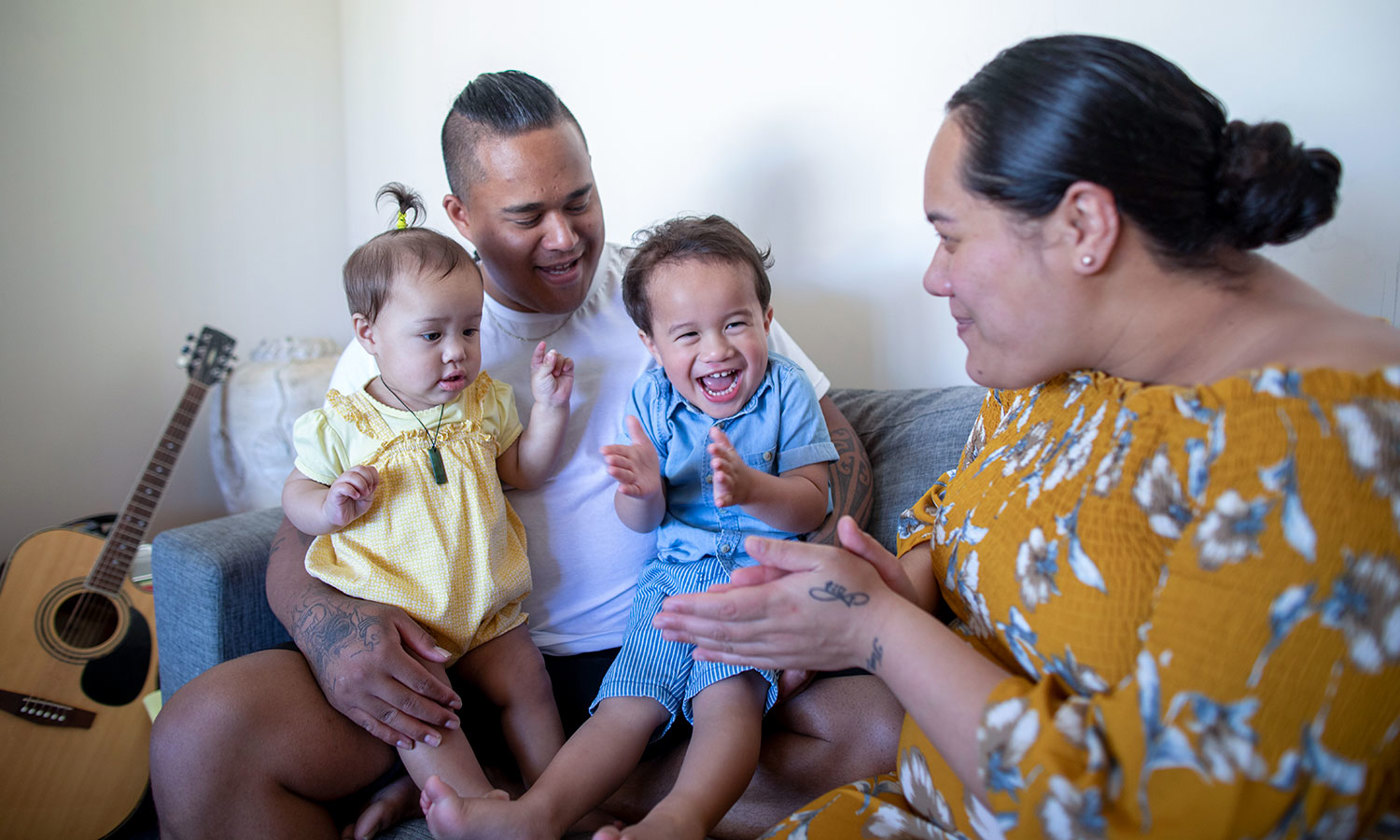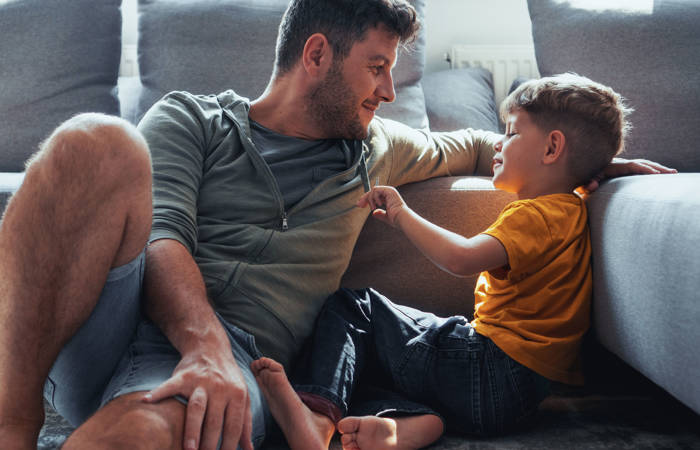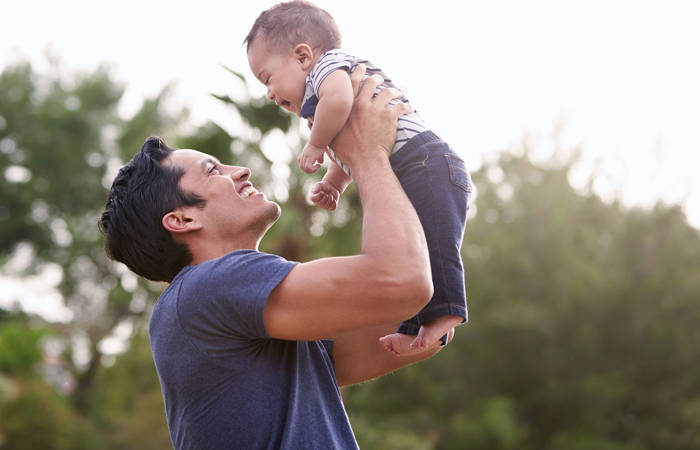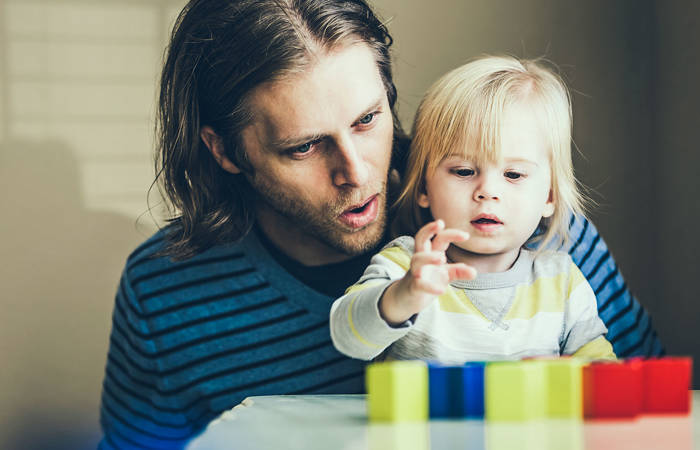Like what you see?
Sign up to receive more free parenting advice.
Thank you for subscribing to our newsletter!
Early Learning

Credit: iStock.com/SolStock
Many of us speak with our hands and now experts suggest we should always use our hands when talking with children. Why?
While young children are forming and expanding their vocabulary, gestures help children bridge the gap between words and the world they live in.
“One of the reasons my colleagues and I think gestures are important for learning is because they can convey information in the same manner as words,” says Dr Elizabeth Austin, a Postdoctoral Research Fellow in the Centre for Healthcare Resilience and Implementation Science.
“For example, if I said, ‘There is a shallow creek near my house’, I can use my hands to convey the depth of the creek.
“But gestures can also convey information that goes beyond the meaning of words.
“For example, still talking about the creek, I might use my hands to convey other characteristics that I don’t verbalise, like the way it flows.
“Gestures either provide repetition of concepts or an extension of the concept being talked about, and both are important for young children in cementing learning and extending understanding.”
Dr Austin and her colleagues at Macquarie University are researching how the presenters of the popular children’s television show, Play School, use words and hand gestures to convey meaning.
“We want to know how presenters spontaneously use their gestures when they talk to their audience,” she explains.
“I’m particularly interested in how the presenters use spontaneous gestures in relation to spatial concepts and ideas as, we know, spatial learning during early childhood and primary school has implications for STEMM (science, technology, engineering, mathematics and medicine) engagement during high school and later on.”
Dr Austin explains that the aim of the study is the first step in understanding the role of gestures in children’s learning from television programs.
“With the results of this study, we can then provide producers and presenters with some guidance on when and how to use gestures in a way that fosters learning for young children,” she adds.
How does the use of gesture help our children learn?
In earlier research, Dr Austin and her colleagues have found that gestures play an important part in how children comprehend information, as well as, how they communicate their ideas.
In 2017, they found that children who were presented with verbal information alongside gestures recalled more than children who received only verbal information.
In 2018, they studied how children and adults use spontaneous gesture when recalling route directions.
They found that children often used gesture to convey additional information that was not present in their speech content.
Most recently, in 2021, Dr Austin and her colleagues found that gesture significantly benefited learning and comprehension.
“For early childhood educators and parents, my message is always try to use your hands when you talk,” recommends Dr Austin.
While her focus is on spontaneous gestures, gestures you produce when you aren’t consciously thinking about it, she concedes that while conscious gestures can come across as forced, they will still help.
“Children will use the gestures you produce to understand what you are saying, and they can support children’s memory,” she adds.
Dr Austin highlights that the use of gestures is probably more important in today’s COVID environment.
Some early learning educators are wearing face masks while educating young children, or for the children just starting school, many are experiencing online learning where they can only see their teacher’s face.
“Masks muffle speech and cover facial expressions, and even adults report struggling to communicate in mask wearing interactions,” says Dr Austin.
“In these situations, from what we understand about how gestures help in social and learning interactions, gestures are going to be even more critical to children understanding what we are saying when we talk to them.
“Gestures are a big part of expression, so if we take away one source of that information, either the face via a mask or the hands via the screen, then we will rely more heavily on the other options available to us.”
Dr Austin recommends educators who are teaching online to make sure their camera is set up in a way children can see their hand gestures.
Gestures either provide repetition of concepts or an extension of the concept being talked about, and both are important for young children in cementing learning and extending understanding.Dr Elizabeth Austin
Stay up to date with the latest news and articles from First Five Years
Thank you for subscribing to our newsletter!
What is a gesture?
“Essentially, gestures are a form of nonverbal communication and can involve any part of the body, from nodding your head, to facial expressions to hand movements,” explains Dr Austin.
For the study on Play School, she is particularly interested in hand gestures - the way we spontaneously use our hands when we talk. These gestures come in four categories.
The first is deictics, which is pointing gestures.
“We typically use them in conversation to draw attention to things in our environment or to convey directional information,” Dr Austin explains.
The second is iconic gestures which are pantomime type gestures where we create a representation of a characteristic of the thing we are talking about.
“For example, if I was telling you about my dogs favourite toy, I might use my hands to convey size and shape characteristics of the toy,” she says.
The third is metaphoric gestures, which are similar to iconic gestures, but they convey abstract concepts.
“So, if I was talking about trying to decide the balance of pros and cons of eating the whole cake today or spreading it out over a week, I might use my left hand to indicate the relative balance of pros and cons,” she says.
Finally, there are beat gestures, which Dr Austin explains that while researchers don’t completely understand their role in a conversation, they are thought to emphasise the words they accompany by enacting a beat in that part of the sentence.
“You might move your hand up and down in time with your speech, though we tend not to move our hands in a metronome type way, so it’s more like once or twice in a sentence that you might produce a beat gesture,” she explains.
Television shows that help children learn
“The more words children hear in context, the better their language development, and multimedia learning tools, like television shows are typically part of children’s lives and provide an opportunity for expanding their vocabulary,” says Dr Austin.
She recommends that parents think critically about the shows their children watch and consider the following questions:
- Do the characters have a wide vocabulary, or do they just make noises like squeaks?
- Do the characters have arms and fingers?
- Are the presenter’s arms and hands visible in the show?
“By picking shows that have a wide vocabulary and where gestures are visible, we can create more opportunities for our children to learn and understand the world,” she explains.







